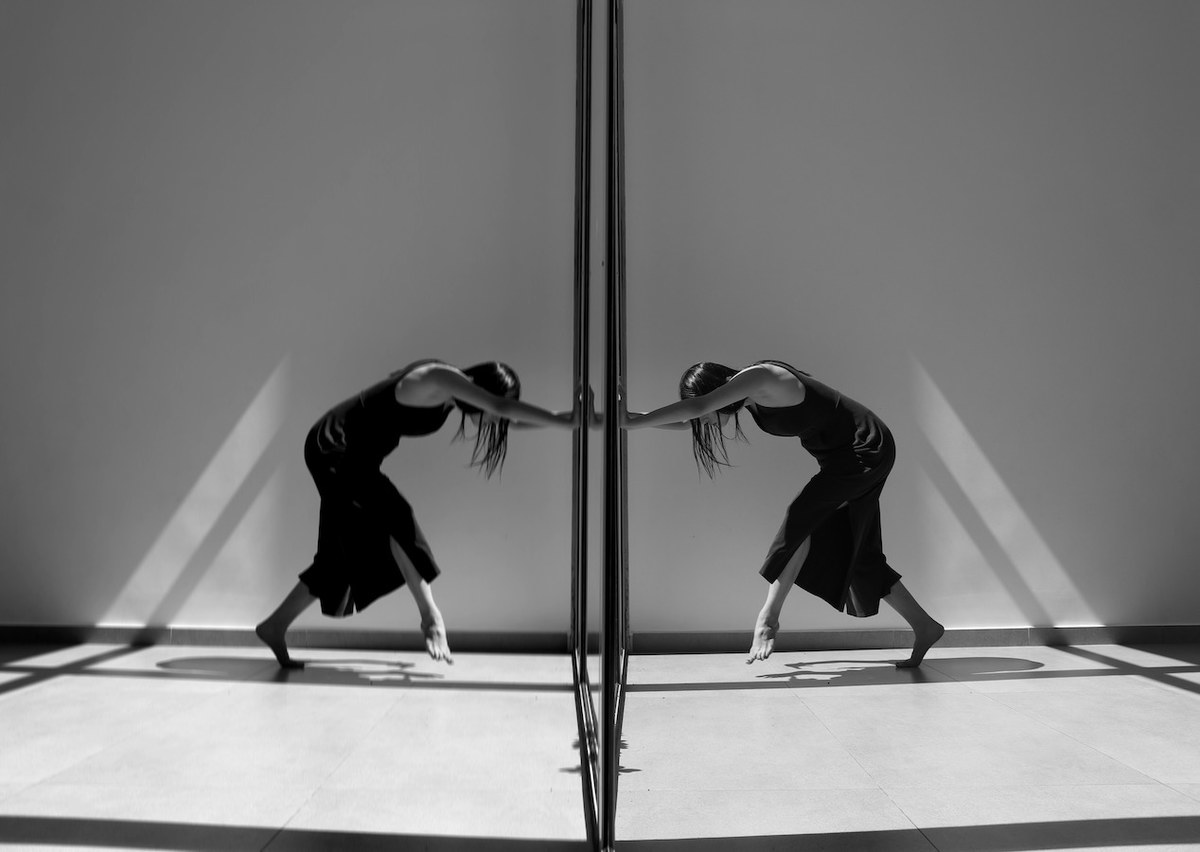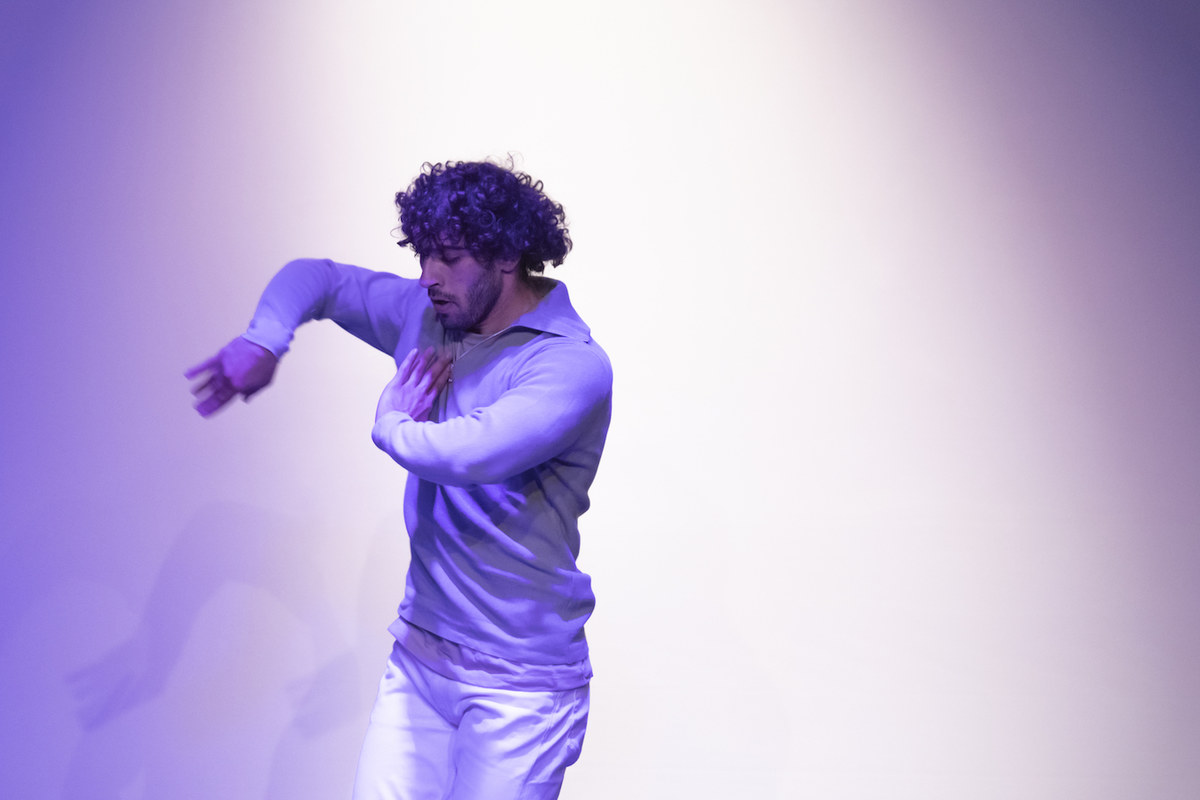LONDON: A little over a year ago, Mira Majzoub was approached by the videographer Mansour Rachid. He had an idea. He wanted to produce a film of her dancing to a particular piece of music in a certain location. That location would be the Old Silk Factory in Damour, Lebanon. The music would be Ibrahim Maalouf’s “Overture II — Alf Leila Wa Leila.”
“We were discussing whether it would be choreographed or whether it would be improvised and I decided to do it as an improv because it was an evolving process, so I wanted it to be very genuine when we were there,” explains Majzoub. “We actually took no more than two or three shots of the whole thing, just for it to be genuine and for me to portray where I was at at that moment in time. To make it sincere.”
The end result was a mesmerizing translation of the music’s complex cultural identity. Majzoub, who recently enrolled at ACTS/Ecole de danse contemporaine de Paris and is a relatively new member of Beirut Contemporary Ballet, has an intense yet joyful fluidity to her movement. Maybe that’s why the performance helped to open a rare public window into the world of contemporary dance — a world that is as much misunderstood as it is underappreciated.

Mira Majzoub has an intense yet joyful fluidity to her movement. (Supplied)
For Majzoub, contemporary dance, with its focus on improvisation and versatility, has allowed her to dig deeper into herself, to uncover meaning, and to cope with extreme circumstances. “Sometimes I spend more than an hour just repeating the same move or repeating the same concept again and again because I discover more feelings, I discover how my body moves in a certain way, and this process is not just happiness, it’s not just joy; it kind of takes me from one place to another,” she says. “It’s like taking another step, digging inside how my body and how my brain connect with each other to create.”
Dance has also helped her adapt to the turmoil that has engulfed Lebanon. The day after the explosion at Beirut Port last year, she went to her room, closed the door, and began to move her arms up and down in a certain way. There was no music, just this articulated movement and an irregular form of breathing.
“I realized something,” she says. “That even in good times or bad times, even after an explosion or at a wedding, I’d be moving. This is the first thing I would go to. The first thing my body would go to. For the first time my mind was at ease when I did that small thing in my room. Dance is a tool for me to adapt, dance is a tool for me to be mentally stable, and I’m glad I have learned how to navigate this. How to use this thing that I have.”

Hamza Damrais is originally a breakdancer. (Supplied)
The same is almost certainly true for the movement artist, performer and choreographer Sarah Brahim, whose work covers themes including loss, identity, race and migration. Identity is a big one, largely because of her own complex background — a combination of US and Saudi cultures.
“From a young age I was always confronted with questions of misunderstanding — ‘Where are you from?’ being the most standard and then the questions moving on from there,” she says. “It came from both cultures I belong to. So many people have transcultural experiences and stories. So to make work about this feels like I’m able to create a space where those of us who feel like we don’t belong or have a place that is ‘home’ can exist and are welcome.”
For Brahim, bringing a project to life begins with a personal sense of urgency — a feeling or an idea that “overwhelms my mind and body.”
“It starts with a core, always something I think feels important, unseen, and should be amplified,” she explains. Some projects, such as “Roofless,” were developed from ongoing research into the relationship between the human body and architecture. Others, such as “Body Land/Back to Dust,” involved nine months of moving, researching and writing about how her body held pain and grief. The latter, produced during a residency at Performance Works NorthWest, dealt specifically with the hands and became the seed of her current work.
“I use structured improvisation constantly as a tool because it allows me to develop grounded material, but also to surprise myself and experiment at the same time,” says Brahim, who studied at the San Francisco Conservatory of Dance and graduated from London Contemporary Dance School in 2016. “I use this approach with the many mediums I work with because I care about capturing a specific feeling or experience and having it resonate in others. Being open to the medium that works to communicate and being open enough to listen deeply to where things are coming from keeps me grounded in what I do, no matter the subject or presentation.”
Brahim, who is currently working on a number of projects, including a performance commission and a few exhibitions, is keen to combine her textile practice with performance. That will mean creating sculptures and installations that exist on their own but are also integral to experimentation and performance.
The reasons why she dances, however, have been redefined since the beginning of the pandemic. Like many others, she found it important to look at everything in her life and to reassess what was truly important. “Art and movement saved me and so many others throughout this difficult time and it was not just the practices or media,” she says. “I looked around at the communities in my life and the beautiful ways they were coming together and offering time, conversations, free classes, holding space, and I realized how incredible the people in my life were, all of which had blossomed from pursuing a career in creative work.
“For me, it is about the people, but also what we are doing is questioning and pushing our experiences further with each project and I find this fascinating. There is not anything else I would rather be doing. When I watch a great performance, hear or see something that resonates with me, that feeling of light and interconnection is irreplaceable.”
This is equally true for Hamza Damra, who grew up in Balata on the outskirts of Nablus. Originally a breakdancer, for him dance was, and still is, a way to react to the feelings generated by the environment he grew up in. “Dance taught me the meaning of those feelings,” he says simply.
Last year he received funding from the Arab Fund for Arts and Culture (AFAC) for “Me and I,” a project centered on his experience of living between Palestine and France. Still a work in progress, he has chosen angry, sharp movements to represent his time in France (in contrast to the peace and freedom he experiences there), and more fluid movements for Palestine, “despite the harsh situation, the unstable emotions, the uncertainty.”
“I have created a language of movement that has been extracted from my own circumstances,” he explains. “Circumstances that I have been through and I’m still going through.”
Despite its vitality and relevance — and the myriad benefits experienced by its practitioners — contemporary dance remains misunderstood in the region, sometimes deeply so. The likes of AFAC and Sharjah Art Foundation may support performance, but it is often regarded as inaccessible or even elitist. And that perception is unlikely to change without greater emphasis being placed upon its cultural value.
“I think contemporary performance as a whole can be undervalued all over the world,” says Brahim. “Therefore also less engaged, documented, and publicized. Performance is quite difficult to commodify or (monetize) compared to other creative fields, which is exactly what makes it special, alive, temporal, but also probably why there is less interest in it. My work specifically has found homes inside industries like music, design, film, and contemporary art. Moving forward, hopefully there is space for all forms of expression to be less rigid in definition and more integrated in form.”












